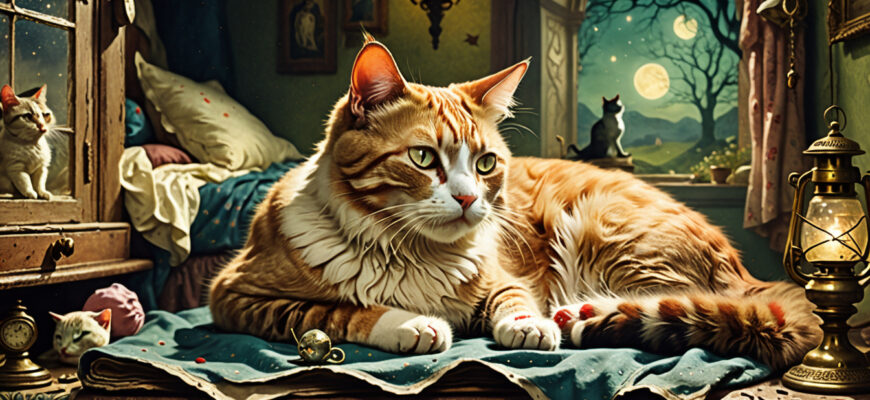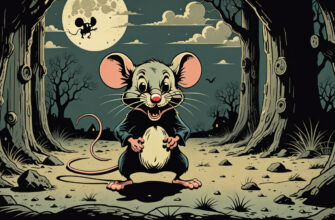You wake up shaken. There was blood. Limping. Maybe a tiny cry that felt more like silence than sound. Anyone who dreams of injured cats knows those images don’t leave when you open your eyes. They stick. They scratch at something deeper. These dreams aren’t random. They hit when something tender inside you is stretched too thin or shoved too far down. While dream dictionaries might throw out quick answers like “it means you’re worried,” the truth is quieter and more layered. People dreaming of hurt cats aren’t just reacting to a bad day—they’re dreaming their way through pressure, burnout, invisible pain, and emotional abandonment.
- Common Dream Symbols Involving Cats: Bleeding, Limping, Silent Suffering
- Primary Emotional Themes: Suppressed Pain, Ignored Intuition, Self-Neglect
- What The Dream May Be Trying To Tell You
- Caretakers, Empaths, and the “Fine” Lies We Tell Ourselves
- Why people who are always the strong ones dream of suffering animals
- 1.1 Caring without replenishing
- 1.2 The guilt of turning attention back toward yourself
- The psychic cost of peacekeeping and emotional labor
- 2.1 Dream cats as embodiments of burnout
- 2.2 Who looks after you when you’re busy looking after everyone else?
- What these dreams may look like for empaths or highly intuitive people
- 3.1 Feeling physical hurt in dreams
- 3.2 Waking with grief, confusion, or urgency
- Dream Interpretation as Shadow Work, Not Just Symbolism
- The symbolic cat as emotional truth clawing its way back
- 1.1 When a dream is your subconscious revolting
- Reclaiming your story: letting the suffering mean something
- 2.1 Seeing the dream as an invitation into healing
- 2.2 Journaling, meditation, and other tools to dialogue with the cat
- When the dream doesn’t stop — recurring themes and unprocessed pain
- 3.1 What you’re not listening to
- 3.2 Dream repetition as a sign of stuck emotional cycles
- Small Magics: Rituals, Symbols, and Practices for Dream Integration
- Simple protection rituals for dreamers
- Writing your dream backward: a re-storying ritual
- Integrating the cat in waking life
- 3.1 What would it look like to tend to your inner feline?
- 3.2 Creating a sacred pause for care, silence, or messy grief
Common Dream Symbols Involving Cats: Bleeding, Limping, Silent Suffering
Plenty of people report the same images: a cat covered in blood but still breathing, dragging a broken leg across the floor, or sitting silent in a corner with eyes that scream. Others even dream the cat keeps getting hurt and nothing they do seems to help. It’s never just a cat. It’s something soft that doesn’t fight back, that can’t ask for help, and that seems to suffer in the background—almost normal, almost expected.
Cats show up in emotionally intense dreams because they hold metaphor and meaning by default. They’re symbols of mystery, independence, and intuition. When they’re injured, you’re watching those parts of yourself—your quiet strength, your voice of reason, your softness—get frayed or silenced. These aren’t just symbols. They’re calls for attention. Messages from your subconscious dressed in fur and fragility.
Primary Emotional Themes: Suppressed Pain, Ignored Intuition, Self-Neglect
Dreams about hurt cats hit when your emotional life gets too heavy to carry on in silence. Sometimes you’re carrying so much that even your dreams stage interventions. Sound familiar?
- You tell everyone “I’m fine” but your body keeps hinting you’re not
- Your reactions feel muted, but you’re always tired
- You’re always the helper but no one checks on your heart
The dream cat is often a stand-in for you—especially if you’ve been absorbing other people’s messes, putting off your needs, or pushing through pain with a smile. Many caregivers, empaths, and peacekeepers in chaos report dreams with injured animals when they hit their emotional wall.
The gut-level truth? You’re overwhelmed.
But it doesn’t always register until this quiet, limping thing needs saving in the middle of the night… and suddenly it’s all too familiar.
What The Dream May Be Trying To Tell You
This kind of dream has layers, but consistently comes down to one thing: something in you is hurting and getting ignored. You could be showing up for everyone else but leaving your own wounds unattended.
Here’s how to know if you’re emotionally ghosting yourself:
| Red Flag Behavior | What It Might Mean |
|---|---|
| Feeling emotionally numb or mechanical | You’re operating in survival mode, not truly living |
| Getting upset over small things with no clear reason | Suppressed emotion showing up sideways |
| Struggling with decisions or gut feelings | Your intuition is crying out but being ignored |
| Guilt when you try to rest or prioritize yourself | You’ve internalized self-neglect |
More often than not, the injured cat is you in disguise. It’s the holy part of you who needs gentleness, the part of you who is scared but still here. These dreams might not come with answers, but they come with permission. Permission to not be “fine.” Permission to come back to yourself.
Caretakers, Empaths, and the “Fine” Lies We Tell Ourselves
If you’ve ever had a dream about a cat bleeding, limping, or silently suffering—and woke up feeling like your heart cracked open—you’re not alone. For people who always have it “together,” who check on everyone else but forget themselves, these dreams are holding up a mirror. They’re not random. They’re reminders from your subconscious: you’re not fine, no matter how often you say you are.
Why people who are always the strong ones dream of suffering animals
Tough doesn’t mean untouched. The dream of a wounded cat often shows up for those who carry entire households on their backs, fix everything and everyone, and rarely ask for help. The cat’s pain? That’s theirs. That’s the piece they pushed aside because it wasn’t “urgent.”
1.1 Caring without replenishing
You’re pouring from a cup that cracked months ago. When empathy turns into over-functioning, these dreams become emotional SOS signals. The injured cat is your inner you—the part that stops to nurture but never gets nurtured. Unhealed trauma often seeps in beneath the surface, and dreams become the only place it’s allowed to speak.
1.2 The guilt of turning attention back toward yourself
And when the dream leaves you shaken, the guilt follows. Guilt for making it “about you.” For needing rest. For wanting softness in a hectic world. But here’s what that limping dream-cat wants you to know: tending to your own pain doesn’t make you selfish. It makes you human.
The psychic cost of peacekeeping and emotional labor
More than just physical exhaustion, emotional labor creates psychic weight. Trying to hold peace in a chaotic house or keep everyone okay at work or at home? That takes a secret toll. And when the subconscious gets tired of waiting, it sends in symbols.
2.1 Dream cats as embodiments of burnout
Think of the cat as your emotional barometer. When your dream centers around a slumped, bleeding, or silent animal—you’ve gone too long without tending to your own energy. The cat limps because your spirit does. These dreams aren’t punishment. They’re alerts that your “peacekeeping” role is slowly hollowing you out inside.
2.2 Who looks after you when you’re busy looking after everyone else?
Someone has to care for the caregiver. When that person doesn’t show up (spoiler: it was supposed to be you), your dreams start screaming. They claw up what you’ve buried deep—images of soft things being broken, dependent creatures slipping away. Your psyche isn’t subtle. It wants rescue. From you.
What these dreams may look like for empaths or highly intuitive people
People who are emotionally attuned tend to receive messages in sharper color. Their dreams come with body sensations, psychic bleed-through, and hyper-real pain. An injured cat is never “just a dream” for empaths—it’s a gut punch.
3.1 Feeling physical hurt in dreams
The pain feels real. You wake as if you were the one limping, the one with blood on your paws. That’s not exaggeration. Empathic people often embody pain that isn’t even theirs—so when your dream-self holds a dying cat, you might wake up with aching arms or that hollow feeling in your chest.
3.2 Waking with grief, confusion, or urgency
Sometimes it lingers—a feeling that someone out there needs help. Or a soul-deep dread that you let something down. It’s confusing. You may cry without knowing why. That’s the dream leaving its fingerprint, asking: “Pay attention. I showed you pain so you could finally name yours.”
Dream Interpretation as Shadow Work, Not Just Symbolism
Most dream dictionaries reduce cats to keywords: independence, agility, maybe mystery. But dreams with injured cats are rarely that shallow. This isn’t about what the cat “stands for.” It’s shadow work in disguise. It’s everything you shoved into your psyche’s basement—finally breaking through.
The symbolic cat as emotional truth clawing its way back
Hurt cats don’t whisper—they scream. These are the dreams that shock you awake in a sweat. They’re the stories your subconscious tells when it’s done playing nice.
1.1 When a dream is your subconscious revolting
If your wounded cat keeps showing up, it’s not symbolic fluff. It’s mutiny. It’s your deeper self saying: “I’m not okay. We’re not okay. And pretending doesn’t work anymore.” The dream is a body-memory. A repressed emotion clawing through comfort zones.
Reclaiming your story: letting the suffering mean something
The dream isn’t there to scare you. It’s a thread—and if you follow it, you might unravel something real. Something lost. Something worth healing.
2.1 Seeing the dream as an invitation into healing
The pain doesn’t just point to wounds; it opens a door back to yourself. Not all messages come gentle. Some come bruised and feral, asking, “Will you finally look after me?”
2.2 Journaling, meditation, and other tools to dialogue with the cat
- Journaling: Ask the cat questions. Why is it hurt? Who hurt it? What does it need?
- Meditation: Visualize yourself healing the cat. Watch what emotions surface.
- Art: Draw or write a story about the cat waking up whole. What does healing look like?
When the dream doesn’t stop — recurring themes and unprocessed pain
If the cat keeps appearing, in different versions of pain, it means the message hasn’t landed. You might still be ignoring a larger truth your dream desperately wants you to see.
3.1 What you’re not listening to
Sometimes the issue isn’t what the dream says. It’s what you refuse to say out loud. Like: “I’m not okay.” Or “I resent this caregiving role.” Or even “I need to be held for once.”
3.2 Dream repetition as a sign of stuck emotional cycles
The same pain. The same blood. The same cat. That kind of loop points to a blocked process. Processing grief, rage, unmet needs—it’s like digestion. If you don’t do it, your psyche will keep spitting it back out in your sleep.
Small Magics: Rituals, Symbols, and Practices for Dream Integration
Dreams don’t vanish after you wake. They settle somewhere inside you. If you want to shift their power, you need ritual—that sacred pause that says: “I’m listening now.”
Simple protection rituals for dreamers
- Crystals: Amethyst and black tourmaline for calm and protection
- Herbs: Mugwort tea (before bed), lavender bundles under pillow
- Symbols: Place a protective sigil or meaningful object on your nightstand—something ancestral, something sacred
Writing your dream backward: a re-storying ritual
Rewrite the dream in reverse. Let the cat heal. Let the day end in peace. Your brain rewires through story. Give it one that ends in restoration.
Integrating the cat in waking life
3.1 What would it look like to tend to your inner feline?
Your cat might want rest. Space. Food. Affection. Play. What if you honored that metaphor like a pet you loved? Maybe you turn off your phone early for once. Maybe you nap without guilt.
3.2 Creating a sacred pause for care, silence, or messy grief
Not every healing moment is calm and pretty. Sometimes it’s crying in the car. Sometimes it’s turning down a friend and saying, “I’m tired.” Create these moments like they’re sacred. Because this kind of grief—the silent, buried, dream-fed kind—deserves reverence too.








